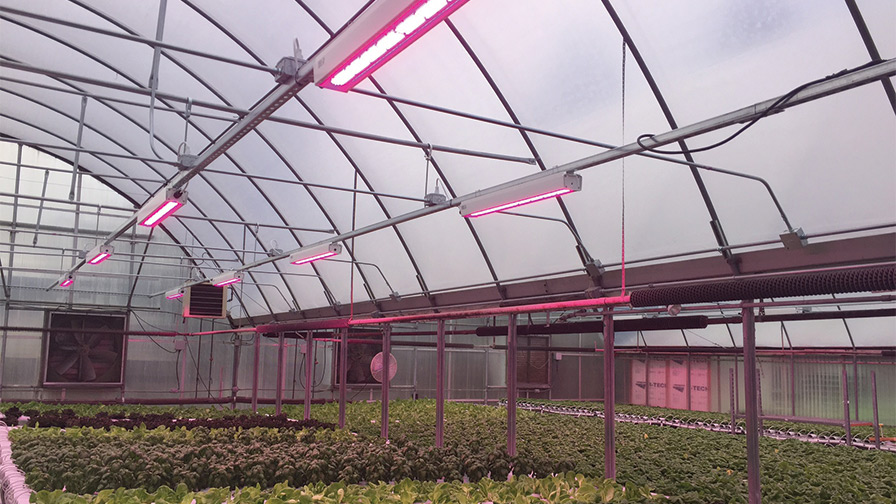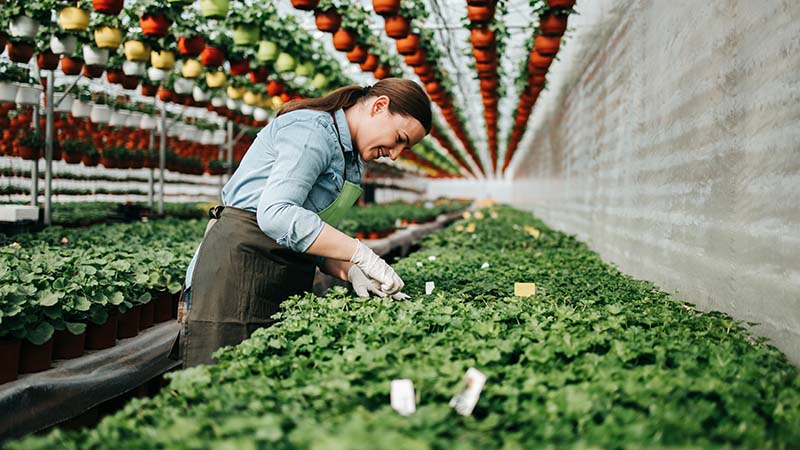What You Need to Know About Light Performance Testing on Greenhouse Plants
 As a grower, you’ve likely been hearing more about new options in lighting that are available. You’re always looking for ways to save energy and be more efficient, but you also need to balance experimentation with knowing what works for your operation. You hear about some good experiences and some not-so-good ones, and you aren’t quite sure what to make of it. How long will it last? Will it really save that much energy? The color’s different — will that make a difference for me?
As a grower, you’ve likely been hearing more about new options in lighting that are available. You’re always looking for ways to save energy and be more efficient, but you also need to balance experimentation with knowing what works for your operation. You hear about some good experiences and some not-so-good ones, and you aren’t quite sure what to make of it. How long will it last? Will it really save that much energy? The color’s different — will that make a difference for me?
If you’re a greenhouse manager in 2019, here’s the good news: other people just like you were in the same boat in 2010, as the introduction of light-emitting diodes (LEDs) to general lighting was just beginning. People responsible for warehouses, factories, and roadways were confronted with many of the same questions and constraints that you’re facing now. And, while there are horticulture-specific concerns you need to consider, the plus side is that the general illumination industry has blazed a trail for verifiable third-party testing standards that you will be able to follow. Here’s a closer look at how you can benefit from them, and how others are already doing so.
Rigorous Performance Testing
Nearly every fixture in the North American lighting market goes through a rigorous inspection by certified third-party test labs. The first part of the check is for safety. While regular light fixtures are usually inspected to the ANSI/UL 1598 general safety standard, the unique challenges of the greenhouse environment have led the safety testing labs to define a standard that goes beyond 1598’s normal test procedures. The industry has not yet standardized on an official ANSI-certified test number, but major test labs all have generally equivalent safety certifications that also address moisture, corrosion, and worker safety from blue and ultraviolet wavelengths. Be sure to ask a fixture manufacturer about this certification.
The next stop on the standards checklist for a horticultural fixture is performance testing. This often happens at the same labs that do safety testing, but this is meant to verify efficiency, output, spectrum, and other important performance variables. These labs are all certified, so a test on a fixture should be repeatable at any other lab certified to the same standard.
The ANSI/ASABE ES-311 working group has produced two standards to use in this performance testing. S640 defines the units of measure for horticultural lighting, while the S642 standard defines the testing protocols for horticultural lighting fixtures. ANSI/IES LM-79 is a referenced standard within S642, and covers the general mechanics of testing a light fixture.
The most important thing for you to know is that this performance testing results in a test report summarizing items like Photosynthetic Photon Flux (PPF), input power (Watts), PPF Efficacy (μmol/J or output micromoles of photosynthetic photons per joule of electrical input power), and spectral content (flux per nanometer, often binned into red, green, and blue categories).
Other standards like LM-80 and TM-21 help make sure that the fixtures will last long enough to make your investment worthwhile. The testing and calculation methods that go into this estimate were painstakingly developed by the general lighting world.
A key difference between general and plant lighting is in what we call flux maintenance. You may have seen something called L70, measured in the thousands of hours. This means that the luminous flux falls to 70% of its initial output at that time point. Why 70%? Human factors testing shows this is the point at which most people will notice that the light has dimmed. Plants don’t have irises that open and close, and their metabolism and growth are driven by light intensity. A 1% decrease in flux means a 1% decrease in growth, so a plant-growing fixture generally stops being useful at the 90% point. And, given that we’re not working with lumens, but photon flux, an L in the measurement is inappropriate. With the term for photon flux being “quanta,” the equivalent term is Q90. Look for this to be at least 36,000 hours.
 How You Can Choose the Right System
How You Can Choose the Right System
There are a lot of test reports, and a lot of alphabet soup describing them. Don’t worry, because it’s about to get simpler for you.
In the early days of LED lighting, utilities were faced with the challenge of comparing these different reports to understand how to issue efficiency rebates. To meet this need, the DesignLights Consortium (DLC) was started to serve as a central clearinghouse for setting energy efficiency and other product performance minimum standards, and to evaluate products against those standards. Products that passed review went on an online list, utilities were able to quickly and accurately incentivize high-performing products, and projects cleared review faster.
With its new minimum performance standards for horticultural light fixtures, the DLC’s goal is to accelerate the adoption of new energy-saving technology. To be on the new DLC Horticultural QPL, a product will need to be at least 10% more efficient than a 1,000-watt double-ended HPS fixture, must have a Q90 of 36,000 hours, and its driver and fan (if included) must have a rated life of at least 50,000 hours. Most importantly, every product will be listed online in a searchable, filterable database to help growers and designers quickly narrow down their search. For example, in a retrofit, you may know what PPF you need from each fixture, but also need to stay within a power budget to avoid rewiring your circuits. Or, you may want to only look at blue-rich lights for a growing task. Whatever your need, this list will help you quickly find and compare products.
When a new technology is introduced, there is always uncertainty about how to best apply it. The horticultural world is no different, and careful planning will be crucial in early experiments and pilot installations. There will surely be new discoveries in the coming years, but with the stable base camp established for us by the general lighting world, we are free to explore application-focused topics of spectrum, intensity, and timing in our quest to produce more with less.










